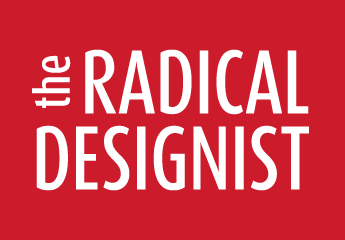“Issue nº 0 of “The ‘Radical’ Designist”, an on-line journal on Design Culture, consists of various contributions written by a group of friends associated to the project. It was first launched on the 14th of July of 2006.
When we asked for contributions for this issue, we had in mind a journal that could publish different kinds of papers focused on the subject ‘Design’, although, outside the well-grounded Design Research Areas.
During the 20th Century, a “Design Culture”, based on the globalisation and definition of the word as “Product-Design”, was established. This Culture could be found in Film, Comics, Literature, Philosophy, Sports, Theatre, Dance, Science, Pottery, Television Series, etc. For example, we may say that this culture is expressively documented in the MoMa gift-shop.
During the process of “designing” this journal, a research project presented for funding at FCT, about Drawing and the 20th Century Portuguese Visual Culture, was approved. Fortunately, this source of income will help maintain this journal ‘active’. In addition to this, another research project (which consists of studying the act/role/purpose of drawing in the Portuguese Visual Culture production, as well as in the rest of the world, with a special emphasis on the Portuguese-speaking countries) emerged.
Our project friends knew nothing about these final developments, however, they managed to construct a fairly exemplary issue, and by this, we hope to trigger further production in the future.
Rosan Chow’s paper replicates much of what she presented in the EAD Conference, giving special emphasis on the complex problems involved in accepting the global definitions of design and Design in place of the universal concept of Design.
Ranulph Glanville gives us an exemplary exercise of what we would like ThRAD to become. His study on Piaget underlines the utmost importance of the Swiss thinker in the construction of our contemporary worldviews on ideation and reasoning. It also provides us with an example of what a focused text is, in other words, one that doesn’t need extensive literature reviews in order to be worthy.
Ranulph also did us the favour of checking the annotated Inigo Jones’s copy of Palladio’s Treatise. These annotations reveal a lost verb and noun: “To designe” and “Designe”, also written as “to desine” and “Desine”, which refer to issues related to projectual drawing. This is conceptually problematic and will need further analytical developments. One must remember that Palladio uses the terms “disegnare” and “Disegno”. We decided to print this paper without any comments. We assume that these terms are useful and resourceful to those who are interested in identifying the origins of the word ‘Design’ related to the practical arts.
Thomas S. Rasmussen clearly exemplifies the kind of contributions that ThRAD welcomes, showing a commitment with what he likes to call the meta-questions in very few and expressive lines.
Luis Carmelo, a Portuguese writer and philosopher that studies film and semiotics, has started to ‘drive’ through the narrow paths of the Design Culture. His paper refers to the recent acquisitions of the meaning of ‘Design’ in, what we could call, the “French Philosophical Tradition”.
Almost at the end of this issue, Eduardo Côrte-Real, entangled between two traditions, has a chewed and re-chewed essay on how to make our ideas obscure.
Cameron Tonkinwise’s paper, a pretty analytical expression, considers man as an A-topian Prometheus; this is, as Polis in the new Cosmos.
This issue also includes other contributions, such as:
Richard Buchanan´s, Dennis Doordan´s and Victor Margolin´s paper that gives us an extensive and critical view, based on their own experience as editors, of one of the most important journals in this field: The plural Design Issues. Once again, recent history is too precious to be thrown over board. The plural approach is implicit, which means that some theories were acknowledged and others were not.

